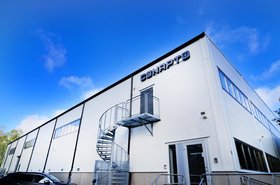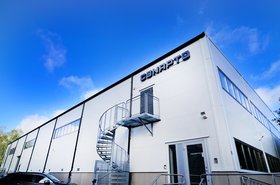As intermittent renewables continue to challenge conventional electric systems and the power demand increases, new energy services are required to balance the grid.
Using uninterruptible power supply (UPS) and lithium-ion batteries during times of grid instability offers data centers an opportunity to contribute to decarbonization, and transition to more renewable energy sources. These initiatives help data centers to meet sustainability goals and utilize the full potential of the infrastructure already installed for a more circular economy.
Grid balancing ensures electricity consumption matches electricity production at any moment within an electrical grid. The equilibrium point for the European network, which operates on alternating current, is at a frequency of 50 Hertz. Grid operators need to ensure this frequency remains stable 24 hours a day, 365 days a year.
The frequency drops if too little electricity is fed into the grid to meet demand. Conversely, the electrical frequency increases if too much electricity is fed into the grid compared with the quantity consumed.
Since power plants are designed to operate within a specific frequency range, both scenarios create a risk of failures, electricity cutting out, or blackouts in worst-case scenarios.
What are the challenges?
One challenge for data center operators is how to maximize the potential of the entire capacity of the UPS system, underlining that data centers are not only consumers of energy but can also actively contribute to power generation, grid balancing, and the circular economy. The green transition involves moving from fossil fuels to renewable sources across energy consumption, including transportation. This increases the need for electricity.
Simultaneously, integrating renewable energy sources such as solar, wind, and hydropower has made grid balancing more complex. These sources are unpredictable, relying on weather conditions that can change rapidly, resulting in more under or oversupplies of electricity. Simultaneously, the rapid changes may require greater flexibility in the way that the grid is balanced.
Other challenges include the grid needing to be able to accommodate increased demand. Transmission constraints in this new reality require constructing new, expensive electricity infrastructure – or more sophisticated approaches to energy production, use, and management.
Four types of reserves
There are four different types of reserves with different requirements on endurance and response time, for example. The automatic reserves have the fastest response time and are therefore activated first when a frequency deviation occurs. The manual reserves are used to restore the automatic reserves to ensure that they are ready for reactivation upon the next frequency deviation.
Fast frequency reserve (FFR)
Fast frequency reserve has the task of handling the initially rapid and deep changes in frequency. Today, FFR is procured on an annual basis.
Frequency containment reserve (FCR)
Frequency containment reserve stabilizes the frequency of any deviation and is fundamental in maintaining balance. FCR can be further divided into three reserves:
- FCR-N (normal), procured symmetrically for upward and downward regulation
- FCR-D upward (upward frequency containment reserve – disturbance)
- FCR-D downward (downward frequency containment reserve – disturbance)
FCR-D is procured as two products, one for upward regulation (FCR-D upward) and one for downward regulation (FCR-D downward). FCR is activated automatically if the frequency deviates from its set threshold. FCR is procured in advance and aims to be available at all times.
Automatic frequency restoration reserve (aFRR)
Automatic frequency restoration reserve automatically restores the frequency to 50,00 Hz when it deviates from this value. As the name implies, this reserve is activated automatically, and is procured in advance.
Manual frequency restoration reserve (mFRR)
Manual frequency restoration reserve has the task of offloading the automatic reserves and restoring the frequency to 50,00 Hz. mFRR is activated manually upon request from the grid owner.
Dynamic grid support offers data centers an opportunity to monetize backup capacity which would otherwise be left idle, while supporting utilities and TSOs in balancing the grid through FFR.
For data center operators, this could be a potential million-dollar revenue stream. Consequently, FFR is a suitable product for UPSs due to its foresight and ability to plan ahead.
As digitalization continues to grow across the world, the data center industry is set to support customers with solutions that not only enable business-critical applications, but also advance environmental and economic sustainability goals.
More from Conapto
-

Inside the sale-leaseback data center
The solution to ditching your data center?
-

Sponsored Six reasons to go colo
Colocation: An accessible, scalable, cost-efficient solution for your facility
-

Vertiv brings grid-supporting UPS to Conapto data centers in Sweden
Move will help grid stability

